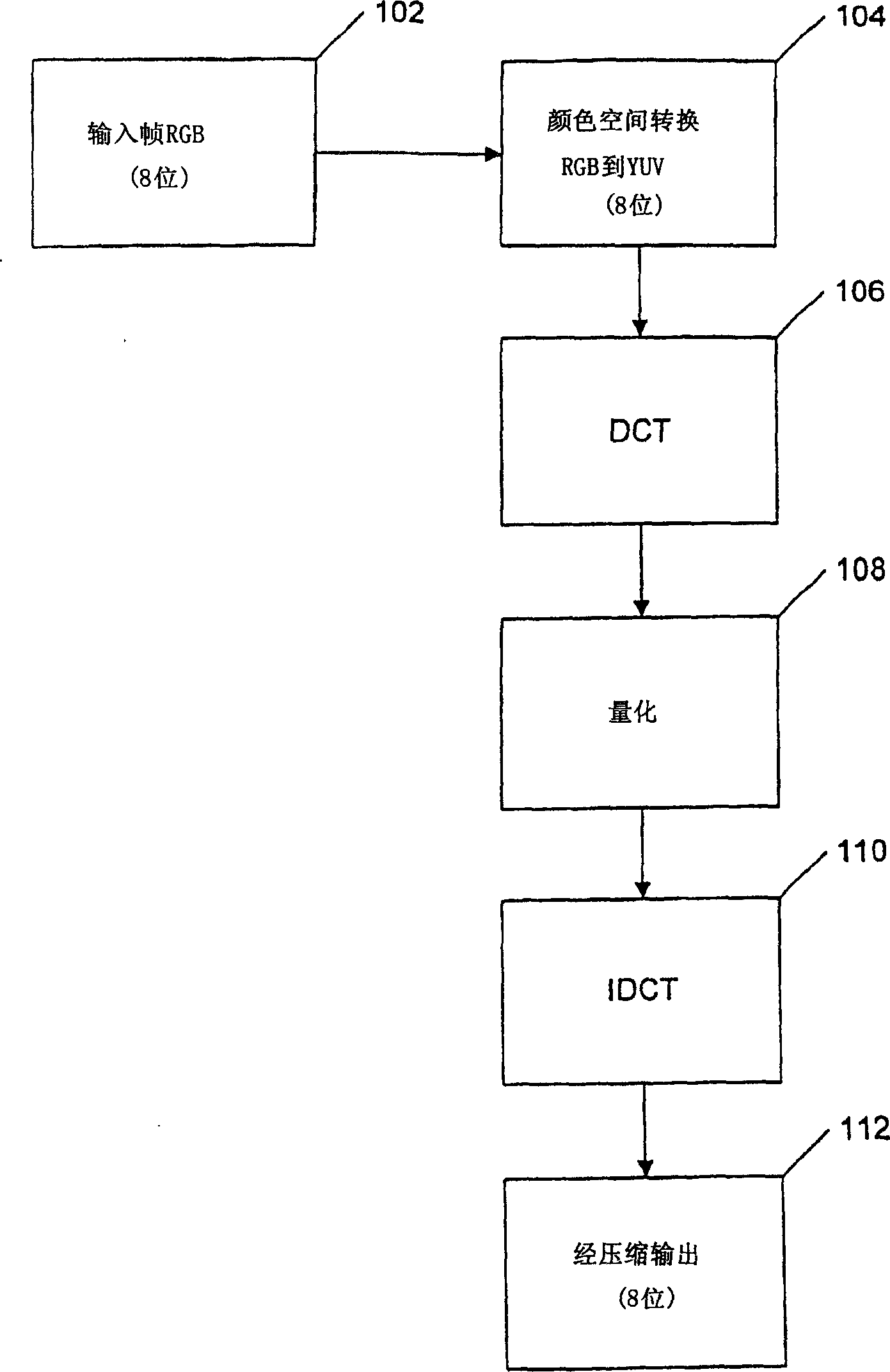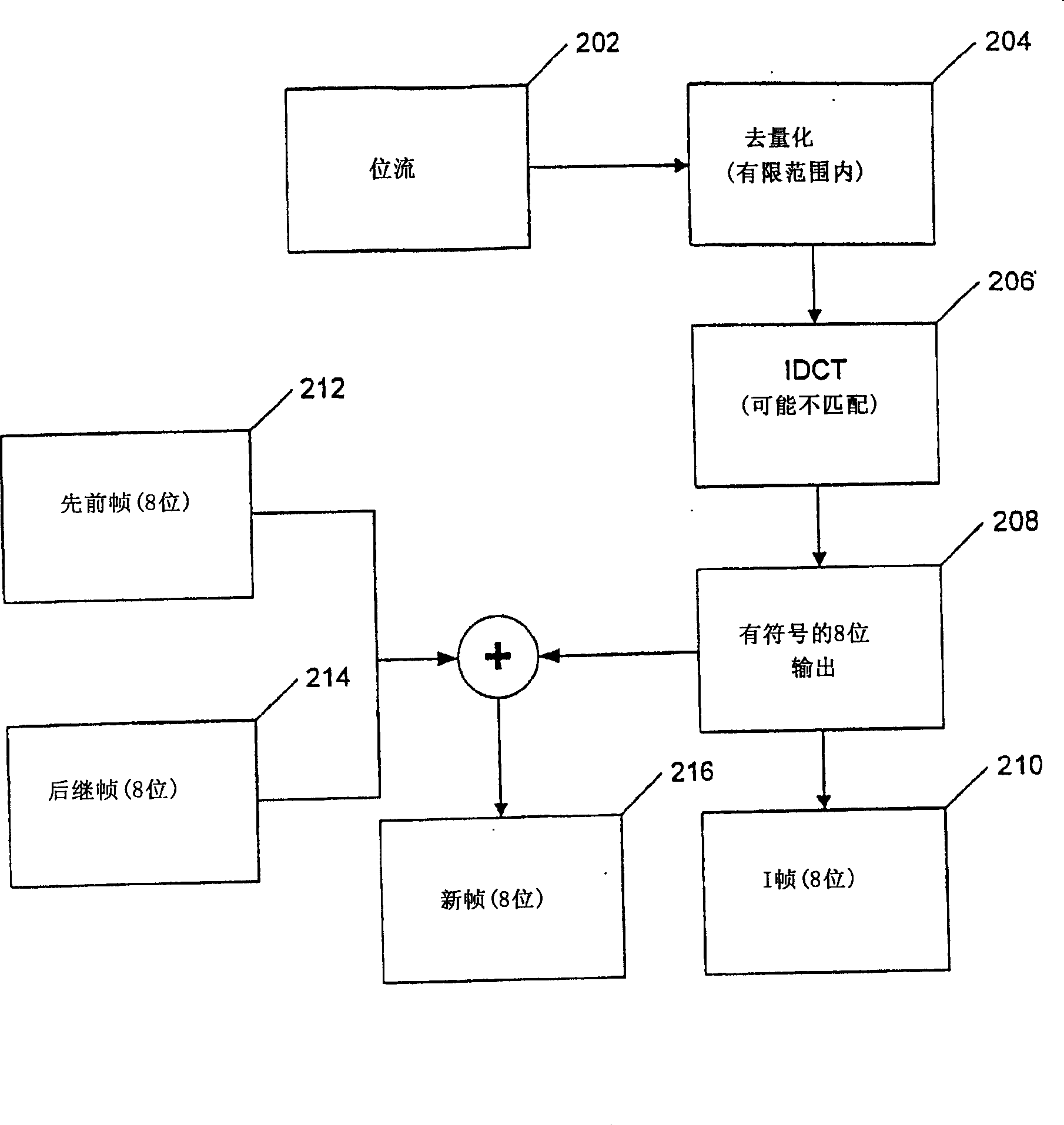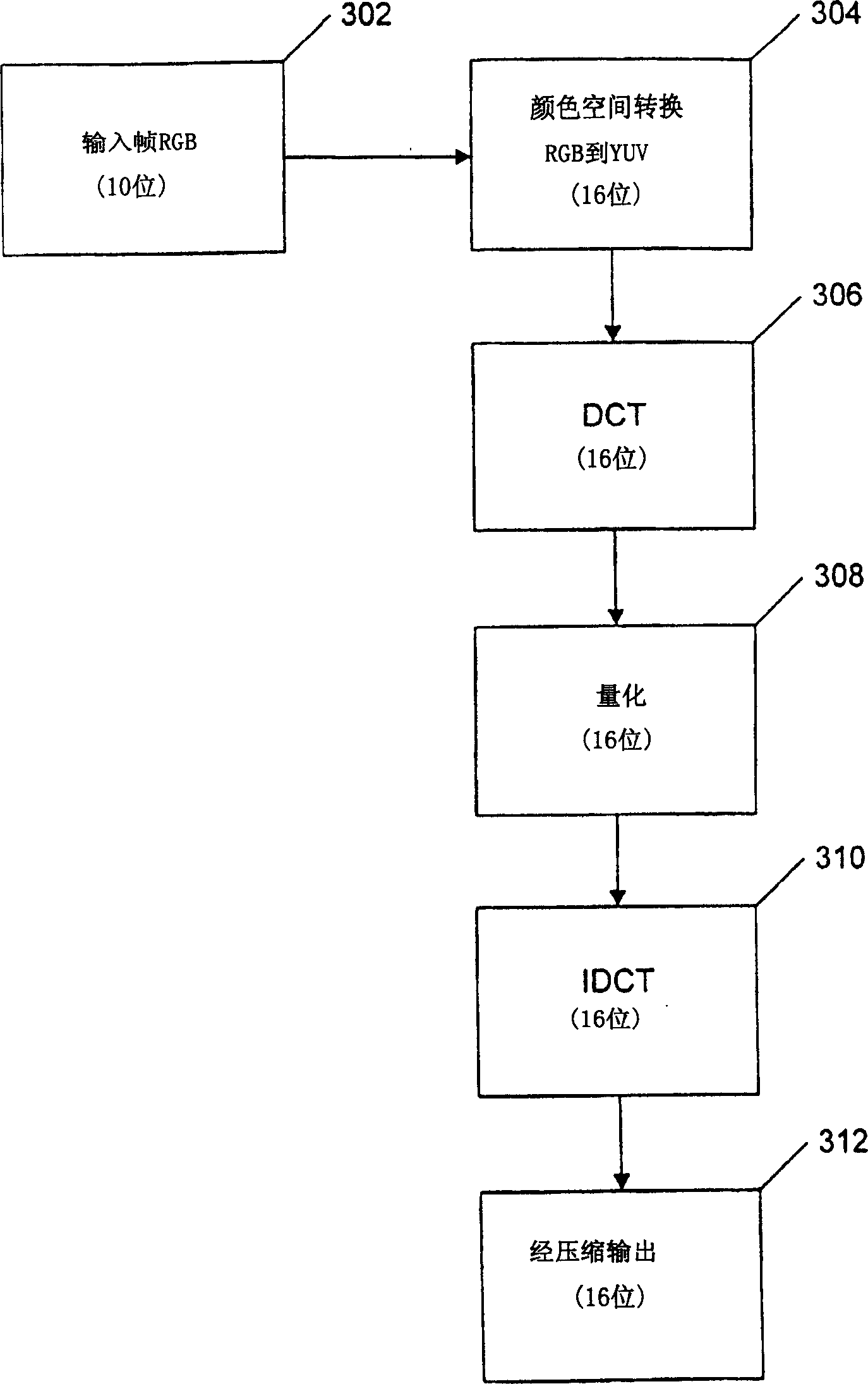High precision encoding and decoding of video images
A video image and bit stream technology, applied in image coding, color TV parts, TV system parts, etc., can solve problems such as reducing the potential quality of images
- Summary
- Abstract
- Description
- Claims
- Application Information
AI Technical Summary
Problems solved by technology
Method used
Image
Examples
Embodiment Construction
[0038] Higher precision intermediate image processing
[0039] The finite precision assumptions and techniques in MPEG-2 and MPEG-4 are designed to minimize the amount of memory required to store I, B and P frames. However, frame memories are currently quite affordable. The present invention is based in part on the discovery that significantly improved picture quality can be obtained from MPEG-style video coding by saving a higher number of bits during intermediate encoding and decoding processing steps. Surprisingly, this increase in quality does not result in a proportional increase in the total number of bits required to decode the image sequence. In fact, using the present invention generally results in a reduction in the number of bits.
[0040] image 3 is a block diagram of an MPEG-like encoding method according to the present invention. The RGB input frame 302 is applied to an RGB to YUV converter 304 . Because modem frame-generating devices (such as video cameras ...
PUM
 Login to View More
Login to View More Abstract
Description
Claims
Application Information
 Login to View More
Login to View More - R&D
- Intellectual Property
- Life Sciences
- Materials
- Tech Scout
- Unparalleled Data Quality
- Higher Quality Content
- 60% Fewer Hallucinations
Browse by: Latest US Patents, China's latest patents, Technical Efficacy Thesaurus, Application Domain, Technology Topic, Popular Technical Reports.
© 2025 PatSnap. All rights reserved.Legal|Privacy policy|Modern Slavery Act Transparency Statement|Sitemap|About US| Contact US: help@patsnap.com



